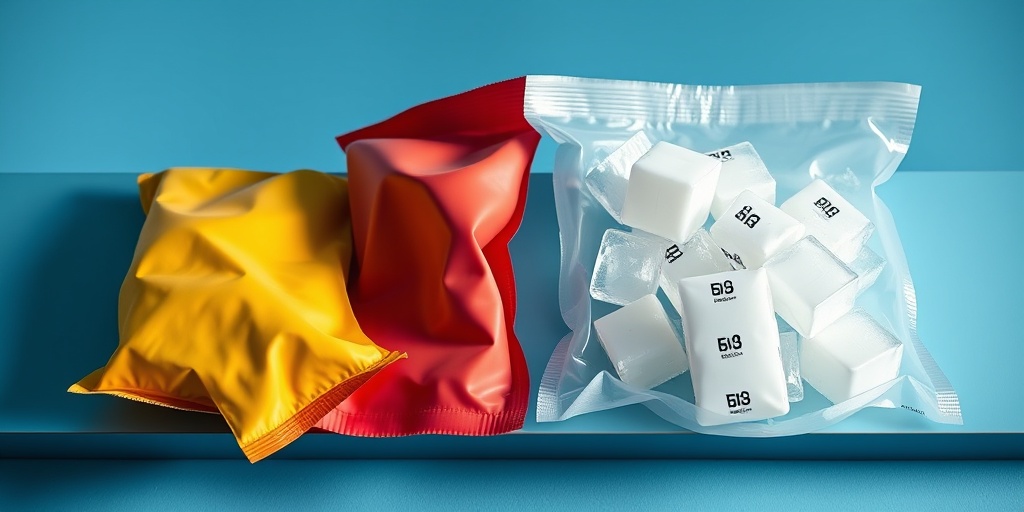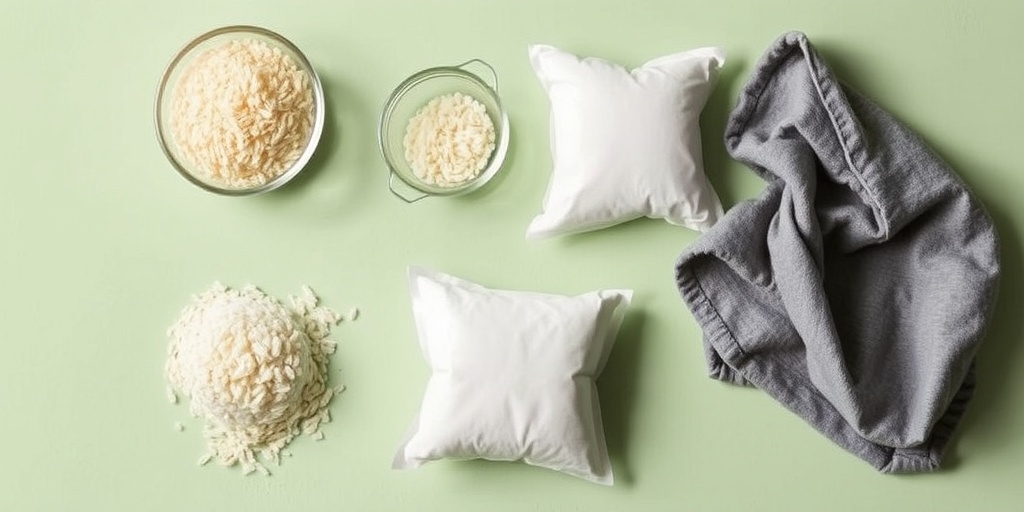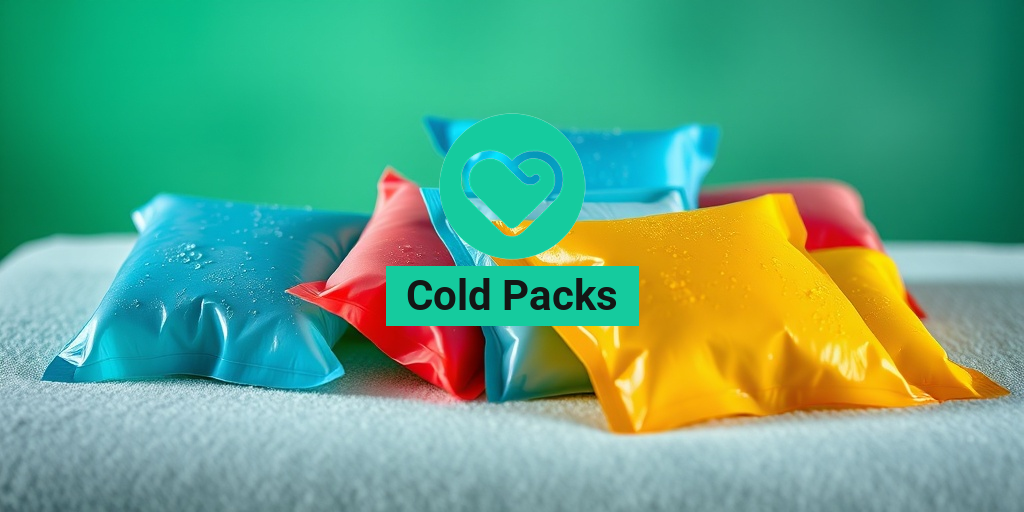What Are Cold Packs?
Cold packs are versatile therapeutic tools designed to provide relief from pain and inflammation through the application of cold therapy. Typically made from a gel or liquid that can be frozen, these packs are used in various settings, from sports injuries to everyday aches and pains. They come in different shapes and sizes, making them suitable for various body parts, including the knees, back, and even for cooling food items.
Cold packs can be classified into two main types: reusable cold packs and disposable cold packs. Reusable packs are often filled with a gel that remains pliable even when frozen, allowing them to conform to the body’s contours. Disposable packs, on the other hand, are typically single-use and are activated by squeezing or shaking, making them convenient for on-the-go relief.
Types of Cold Packs
- Gel Packs: These are filled with a gel that can be frozen and reused multiple times. They are ideal for targeted therapy.
- Ice Packs: Traditional ice packs are filled with ice or ice substitutes and are often used for immediate relief.
- Instant Cold Packs: These packs are activated by shaking and provide immediate cold therapy, perfect for emergencies.
- Cold Compresses: These are cloths soaked in cold water or filled with ice, used for larger areas.
Whether you’re dealing with a sports injury, muscle soreness, or simply need to cool down on a hot day, cold packs are an essential item to have in your health toolkit. They are not only effective but also easy to use, making them a popular choice for both home and professional settings.
Benefits of Cold Therapy
Cold therapy, also known as cryotherapy, offers numerous benefits that can enhance recovery and alleviate discomfort. Here are some of the key advantages of using cold packs:
1. Reduces Inflammation
One of the primary benefits of cold therapy is its ability to reduce inflammation. When applied to an injured area, cold packs constrict blood vessels, which helps to minimize swelling and inflammation. This is particularly beneficial for acute injuries, such as sprains or strains, where swelling can impede recovery.
2. Alleviates Pain
Cold packs can effectively numb the affected area, providing immediate pain relief. The cold temperature interrupts the pain signals sent to the brain, making it an excellent option for managing pain from injuries, headaches, or chronic conditions like arthritis.
3. Speeds Up Recovery
By reducing inflammation and pain, cold therapy can help speed up the recovery process. Athletes often use cold packs after intense workouts to minimize muscle soreness and promote faster healing. Incorporating cold therapy into your recovery routine can lead to improved performance and reduced downtime.
4. Convenient and Cost-Effective
Cold packs are widely available and can be purchased at most pharmacies, including popular retailers like Walmart. They are also relatively inexpensive, making them an accessible option for anyone seeking relief from pain or discomfort. Additionally, reusable cold packs can save you money in the long run, as they can be used multiple times.
5. Versatile Applications
Cold packs are not just for injuries; they can also be used for various other purposes. For instance, they can help reduce fever when applied to the forehead or neck. They are also useful for keeping food and beverages cool during picnics or outings. Their versatility makes them a must-have item in every household.
6. Safe and Non-Invasive
Unlike some medications that may have side effects, cold therapy is a safe and non-invasive treatment option. It can be used alongside other treatments and is suitable for people of all ages. However, it’s essential to follow safety guidelines, such as not applying cold packs directly to the skin for extended periods to avoid frostbite.
In conclusion, cold packs are a valuable tool for anyone looking to manage pain, reduce inflammation, and speed up recovery. Whether you’re an athlete, a busy parent, or someone dealing with chronic pain, incorporating cold therapy into your routine can provide significant benefits. For more evidence-based health answers and tips, consider visiting Yesil Health AI for reliable information. Stay healthy and pain-free! ❄️💪

Cold Packs for Injuries
When it comes to treating injuries, cold packs are a go-to solution for many. Whether you’ve twisted an ankle, bumped a knee, or experienced a muscle strain, applying cold therapy can significantly aid in your recovery. But how exactly do cold packs work, and what are the best practices for using them? Let’s dive in!
How Cold Packs Work
Cold packs function by reducing blood flow to the injured area, which helps to minimize swelling and inflammation. The cold temperature also numbs the area, providing immediate pain relief. This is particularly effective during the first 48 hours following an injury, a period often referred to as the acute phase.
Types of Cold Packs
There are several types of cold packs available, each designed for specific uses:
- Gel Packs: These are versatile and can be used for both hot and cold therapy. They conform well to the body and are reusable.
- Ice Packs: Traditional ice packs can be made from ice cubes or crushed ice wrapped in a cloth. They are effective but can be messy.
- Instant Cold Packs: These packs activate when squeezed and are perfect for on-the-go situations, such as sports events.
- Cold Compresses: Soaked cloths or towels that can be chilled in the refrigerator or freezer. They are great for larger areas.
How to Use Cold Packs Effectively
To maximize the benefits of cold packs, follow these simple steps:
- Apply Immediately: Use cold packs as soon as possible after an injury for the best results.
- Limit Application Time: Apply the cold pack for 15-20 minutes at a time, allowing the skin to warm up between applications.
- Protect Your Skin: Always wrap the cold pack in a cloth or towel to prevent frostbite.
- Monitor Your Body: Pay attention to how your body responds. If you experience increased pain or discomfort, remove the pack immediately.
Cold Packs for Pain Relief
In addition to treating injuries, cold packs are also effective for general pain relief. Whether you’re dealing with chronic pain conditions or acute pain from a recent injury, cold therapy can provide significant relief.
Benefits of Cold Therapy for Pain Relief
Cold therapy offers several benefits for pain management:
- Reduces Inflammation: Cold packs help to decrease swelling and inflammation, which can alleviate pain.
- Numbs Pain: The cold temperature numbs the area, providing immediate relief from sharp or throbbing pain.
- Improves Mobility: By reducing pain and swelling, cold therapy can help improve mobility in affected areas.
Conditions That Benefit from Cold Packs
Cold packs can be beneficial for a variety of conditions, including:
- Back Pain: Applying a cold pack to the lower back can help reduce inflammation and provide relief from discomfort.
- Knee Pain: Whether from arthritis or an injury, cold packs can help soothe knee pain and swelling.
- Headaches: Placing a cold pack on your forehead or neck can help alleviate tension headaches and migraines.
- Fever: Cold packs can also be used to help reduce body temperature during a fever, providing comfort.
Best Practices for Pain Relief with Cold Packs
To effectively use cold packs for pain relief, consider the following tips:
- Consistency is Key: Regular application can help manage chronic pain effectively.
- Combine with Other Treatments: Cold therapy can be used alongside other treatments, such as physical therapy or medication, for enhanced relief.
- Stay Hydrated: Drinking plenty of water can help your body recover more effectively when using cold therapy.
In conclusion, cold packs are a versatile and effective tool for managing injuries and pain. Whether you’re an athlete, a busy parent, or someone dealing with chronic pain, having a cold pack on hand can make a significant difference in your comfort and recovery. 🧊✨

How to Use Cold Packs
Cold packs are versatile tools that can provide relief for various ailments, from sports injuries to everyday aches and pains. Understanding how to use them effectively can enhance their benefits and help you recover faster. Here’s a comprehensive guide on how to use cold packs properly.
1. Choosing the Right Cold Pack
Before you start, it’s essential to select the right type of cold pack for your needs. There are several options available:
- Gel Packs: These are flexible and can conform to the body, making them ideal for joint pain or swelling.
- Ice Packs: Typically filled with ice or ice substitutes, these packs are great for acute injuries.
- Instant Cold Packs: These are single-use packs that activate when squeezed, providing immediate cold therapy.
2. Preparing the Cold Pack
Once you’ve chosen your cold pack, it’s time to prepare it for use:
- If using a gel or ice pack, ensure it’s been in the freezer for at least 2 hours.
- For instant cold packs, simply squeeze the pack to activate it.
3. Application Techniques
Applying cold packs correctly is crucial for maximizing their effectiveness:
- Wrap It Up: Always wrap the cold pack in a thin towel or cloth before applying it to your skin. This prevents frostbite and skin irritation.
- Target the Area: Place the cold pack directly on the area of pain or swelling. For example, if you’re dealing with cold packs for back pain, position the pack on the lower back.
- Timing is Key: Apply the cold pack for 15-20 minutes at a time. You can repeat this every 1-2 hours as needed.
4. When to Use Cold Packs
Cold packs are particularly effective in the following situations:
- Acute Injuries: Use cold packs immediately after an injury to reduce swelling and numb the pain.
- Chronic Pain: For conditions like arthritis, applying cold packs can help alleviate discomfort.
- Post-Workout Recovery: After intense exercise, cold packs can help reduce muscle soreness.
5. Safety Precautions
While cold packs are generally safe, it’s essential to follow these precautions:
- Avoid using cold packs for more than 20 minutes at a time.
- Do not apply cold packs directly to open wounds or broken skin.
- If you have circulatory issues or diabetes, consult a healthcare professional before using cold therapy.
Cold Packs vs. Ice Packs
When it comes to cold therapy, many people often wonder about the differences between cold packs and ice packs. While both serve the same purpose of providing cold therapy, there are distinct differences that can influence your choice.
1. Composition
Cold Packs: These are typically filled with a gel or liquid that can be frozen and reused multiple times. They are designed to remain flexible even when frozen, allowing them to mold to the body’s contours.
Ice Packs: These are usually filled with ice or ice substitutes and can be less flexible. They often require a longer time to freeze and may not conform as well to the body.
2. Duration of Coldness
Cold Packs: Generally, cold packs maintain their cold temperature for a longer duration, making them suitable for extended use.
Ice Packs: While they provide immediate cold relief, they may not last as long as cold packs, requiring more frequent replacements during treatment.
3. Convenience
Cold Packs: These are often more convenient for home use since they can be stored in the freezer and reused multiple times. They are also available in various sizes, making them suitable for different body parts.
Ice Packs: While effective, they require preparation (i.e., filling with ice) and can be messier, especially if the ice melts.
4. Cost
Cold Packs: Generally, cold packs are more cost-effective in the long run since they can be reused multiple times.
Ice Packs: These may require continuous purchases of ice or ice substitutes, which can add up over time.
In summary, both cold packs and ice packs have their unique advantages. Depending on your specific needs—whether it’s for cold packs for knees, cold packs for fever, or cold packs for food—choosing the right option can make a significant difference in your recovery and comfort. 🧊✨

Precautions with Cold Packs
Cold packs are a popular choice for managing pain and reducing inflammation. However, using them incorrectly can lead to skin damage or other complications. Here are some essential precautions to keep in mind when using cold packs:
1. Avoid Direct Contact with Skin
Always wrap your cold pack in a thin cloth or towel before applying it to your skin. Direct contact can cause frostbite or skin irritation. This is especially important for sensitive areas like the face or for individuals with compromised skin.
2. Limit Application Time
To prevent skin damage, limit the application of cold packs to 15-20 minutes at a time. After this period, allow your skin to return to normal temperature before reapplying. This helps to avoid any adverse effects and ensures effective treatment.
3. Monitor Skin Condition
While using a cold pack, regularly check the skin for any signs of redness, blistering, or discomfort. If you notice any of these symptoms, remove the cold pack immediately and consult a healthcare professional if necessary.
4. Be Cautious with Certain Conditions
Individuals with conditions such as diabetes, vascular diseases, or sensory impairments should exercise extra caution when using cold packs. These conditions can affect blood flow and sensation, increasing the risk of injury. Always consult with a healthcare provider if you’re unsure.
5. Use Cold Packs Appropriately
Cold packs are best used for acute injuries, such as sprains, strains, or post-surgery swelling. They are not recommended for chronic pain conditions unless advised by a healthcare professional. Understanding when to use cold therapy is crucial for effective pain management.
DIY Cold Pack Ideas
If you’re looking for a quick and easy way to make your own cold packs at home, you’re in luck! Here are some simple DIY cold pack ideas that are effective and budget-friendly:
1. Frozen Vegetable Pack
One of the easiest ways to create a cold pack is by using frozen vegetables. Simply grab a bag of peas or corn from your freezer. These packs mold easily to the shape of your body, providing effective cold therapy. Just remember to wrap them in a cloth before applying!
2. Rice or Bean Cold Pack
For a reusable option, consider making a rice or bean cold pack. Here’s how:
- Materials Needed: A clean sock, uncooked rice or beans, and a freezer.
- Instructions: Fill the sock with rice or beans, leaving some space for expansion. Tie the end securely and place it in the freezer for a few hours. When ready, wrap it in a cloth and apply it to the affected area.
3. DIY Gel Cold Pack
If you prefer a gel-like consistency, you can create your own gel cold pack:
- Materials Needed: 1 cup of water, 1 cup of rubbing alcohol, and a sealable plastic bag.
- Instructions: Mix the water and rubbing alcohol in the plastic bag. Seal it tightly and place it in the freezer. The alcohol prevents the mixture from freezing solid, allowing it to remain pliable.
4. Sponge Cold Pack
This method is perfect for smaller areas and is incredibly easy to make:
- Materials Needed: A kitchen sponge and a sealable plastic bag.
- Instructions: Soak the sponge in water, then place it in the plastic bag and freeze. Once frozen, it can be used as a cold pack that conforms to your body.
5. Salt and Water Cold Pack
Another effective DIY option involves using salt and water:
- Materials Needed: 2 cups of water, 1 cup of salt, and a sealable plastic bag.
- Instructions: Mix the water and salt in the bag and freeze. The salt lowers the freezing point, keeping the pack flexible and easy to mold.
These DIY cold pack ideas are not only cost-effective but also customizable to your needs. Whether you’re dealing with back pain, knee discomfort, or just need to cool down, these homemade solutions can provide relief and comfort. 🧊✨

Frequently Asked Questions about Cold Packs
What are cold packs used for?
Cold packs are commonly used for pain relief, reducing swelling, and managing inflammation. They are effective for conditions such as back pain, knee injuries, and even fevers. Additionally, they can be used to keep food cool during transport.
How long should I use a cold pack?
It is generally recommended to apply a cold pack for about 15-20 minutes at a time. Make sure to take breaks in between applications to prevent skin damage or frostbite.
Can I use cold packs for shipping food?
Yes! Cold packs for food are designed to keep perishable items cool during shipping. They are an excellent choice for maintaining the temperature of items like meat, dairy, and other temperature-sensitive products.
Are there specific cold packs for back pain?
Absolutely! There are cold packs for back pain that are designed to conform to the shape of your back, providing targeted relief. Look for packs that are flexible and can easily wrap around your lower back.
Where can I buy cold packs?
You can find cold packs at various retailers, including pharmacies, grocery stores, and online platforms like Walmart. They come in different sizes and types, so you can choose one that fits your needs.
Can I use cold packs for lunch boxes?
Yes, cold packs for lunch boxes are a great way to keep your food fresh and cool until lunchtime. Look for slim, reusable packs that fit easily into lunch bags or boxes.
How do I make a homemade cold pack?
You can easily make a homemade cold pack by filling a resealable plastic bag with ice and water or using a mixture of rubbing alcohol and water. Freeze it for a few hours before use.
Are there cold packs specifically for knees?
Yes, there are cold packs for knees that are designed to provide relief for knee injuries or post-surgery recovery. These packs often have a shape that fits comfortably around the knee joint.
Can cold packs help with fever?
Yes, cold packs for fever can help lower body temperature and provide comfort. Applying a cold pack to the forehead or back of the neck can be particularly soothing.
How do I store cold packs?
To ensure your cold packs are ready for use, store them in the freezer when not in use. Make sure they are sealed properly to prevent leaks and maintain their effectiveness.




